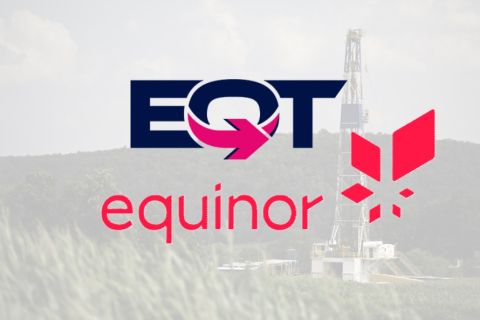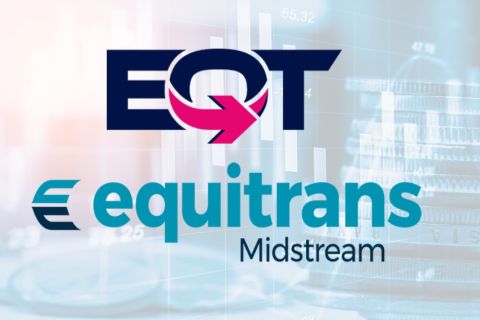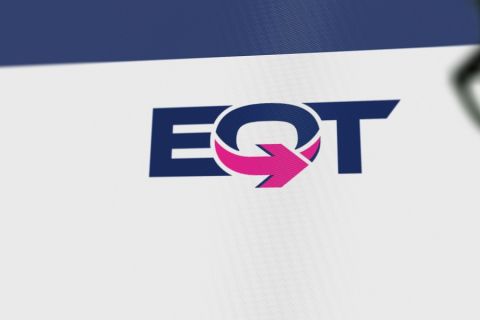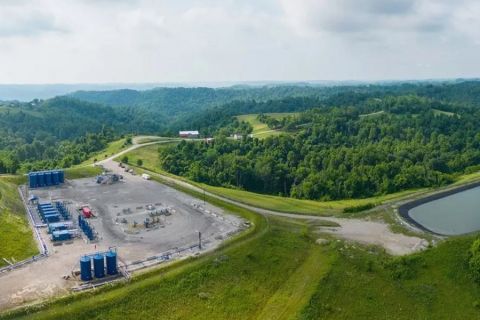Since summer 2005, Wall Street has witnessed the likes of Superior Well Services, Bronco Drilling, Hercules Offshore, Basic Energy Services and Union Drilling post their trading symbols on the Big Board and other exchanges.
 Small wonder. Commodity and energy-stock prices have been at record highs, domestic oil and gas supply/demand fundamentals are tight, private-equity investors are seizing the opportunity to monetize their earlier investments at attractive public-market valuations, and institutional investors can't seem to get enough of any equity paper that's energy-related.
Small wonder. Commodity and energy-stock prices have been at record highs, domestic oil and gas supply/demand fundamentals are tight, private-equity investors are seizing the opportunity to monetize their earlier investments at attractive public-market valuations, and institutional investors can't seem to get enough of any equity paper that's energy-related. This April, two more oil-service providers-Complete Production Services Inc. (NYSE: CPX) and Warrior Energy Services Corp. (Nasdaq: WARR)-made their market debut. Like the 2005 class of service IPOs, these companies are aggressively seeking to capture more of the upstream capex dollars being poured into North America's natural gas resource plays.
While the names of these companies may be new to many investors, their managements have been around for decades. That means they've been through all the down-cycles before and have weathered them. Moreover, they have track records of growing revenues and earnings.
But whether it's because they're just two unfamiliar names in a growing pond of energy IPOs or because the overall Oilfield Service Index has recently experienced a major market malaise, both stocks have recently been trading below their IPO levels. To several market mavens, this isn't necessarily a bad thing. Rather, it represents investment opportunity-once the market understands the growth potential of these companies.
Basin-tailored knowledge
Although formed as a private Houston-based company in September 2005, Complete Production Services wasn't exactly a newcomer to the service sector at that point. Rather, it was the amalgam of three distinct private companies formed since 2001 by SCF Partners, a Houston private-equity provider.
These companies were Integrated Production Services, focused on coiled tubing, wireline operations, production and pressure testing, and other production-optimization services; Complete Energy Services, which provides drilling and workover rigs, fluid-handling services, downhole tool rentals and supplies; and IE Miller Services, one of the largest U.S. rig-transportation companies.
"It made sense to bring these various companies together to take advantage of the growth we anticipated would occur in the demand for completion and production services in resource plays in both the U.S. and Canada," says Joseph C. Winkler, president and chief executive for Complete Production Services.
But to take advantage of the growth opportunities in front of it, the newly created company recognized it would need to tap the capital markets-not only to have a currency to fund the initial and future growth it sought, but also to provide liquidity for its shareholders, principally SCF Partners.
Thus, this past April, the company completed an oversubscribed, aggregate 29.9-million-share IPO, priced at $24 per share, that netted CPX about $293 million. This was after the company's shareholders, in the secondary portion of the offering, sold down their shares in CPX, raising net proceeds of $378 million after underwriting fees.
The book-runners on the IPO were Credit Suisse and UBS Investment Banking; the co-managers, Banc of America Securities, Johnson, Rice & Co. LLC, Jefferies & Co., Raymond James & Associates, Simmons & Co. International and Pickering Energy Partners.
With a capex budget of $230 million for 2006 versus $125 million in 2005, the company, since the IPO, has invested not only in additional equipment to grow future revenues, but also in acquisitions at attractive valuations-to the tune of more than $132 million. This includes its late-August buy of Pinnacle Drilling LLC, a Barnett Shale driller.
CPX's core areas of operation: the Rockies and Midcontinent regions, the Barnett Shale (which it had been in prior to the Pinnacle buy) and Bossier Trend in East Texas, and the Western Canadian Sedimentary Basin.
"Although we have a broad geographic footprint, it's important to understand that our organizational structure is broken down by region, that is, we have local managements with reservoir-specific knowledge in each basin and are thus in a position to understand and deliver tailored completion and production techniques and solutions needed by a particular customer," explains Winkler.
Currently, the company's top 10 customers, which account for 35% of CPX's revenue stream, include EnCana, Devon Energy, XTO Energy, Williams, Continental Resources, EOG Resources, Noble Energy, Chesapeake Energy, Apache Corp. and ConocoPhillips.
"What also differentiates us is that, within specific regions, we have the ability to bring a broad array of completion and production services to bear," says Winkler. "By contrast, other service companies, although they might have a larger geographic footprint, may deliver fewer completion and production services to a given basin."
CPX is also focused on acquisition opportunities that expand its presence not only in existing core areas of operation, as the Pinnacle buy did, but also in newer basins and plays.
Case in point: last November, it acquired Big Mac, a fluids-handling company with synergistic operations in eastern Oklahoma. "However, Big Mac also had a presence in the Fayetteville Shale play in Arkansas where we didn't have exposure," says Winkler. "Since then, we've invested additional capital to grow both our fluids-handling business and other services more rapidly in the Fayetteville. This is an excellent example of intelligent growth through acquisition where we're able to combine consolidation in existing areas with entry into new growth areas."
With this strategy, an undrawn credit line from Wells Fargo of nearly $200 million and access to the public-equity and -debt markets, CPX should have little trouble growing revenues and earnings going forward.
In 2004, its component companies generated aggregate revenues of $321 million; in 2005, $758 million. Reported income, meanwhile, rose from $14 million to $54 million. Notably, during the first half of 2006, the company has already reported aggregate earnings of $55 million.
J. Marshall Adkins, director of energy equity research for Raymond James & Associates in Houston, believes CPX is leveraged to both current and later-cycle industry economics since its broad service offerings cater to both new and existing wells.
"Given the company's growth prospects and recent depressed valuation [the stock in early September was trading below $23], we feel Complete Production Services represents an attractively priced long-term investment idea," he says. He has an Outperform rating on the stock and a 12-month stock-price target of $32.50.
Scott B. Gill, managing director and co-head of institutional research for Simmons & Co. International in Houston, agrees the stock remains cheap relative to its service peers, recently trading at around 11 times his 2007 earnings-per-share (EPS) estimate versus an average peer-group multiple of 14.
"Our 2007 EPS estimate of $2.34 represents growth of 21% over 2006 and does not include potential acquisitions; thus, our [earnings] estimate could prove to be conservative."
Gill notes the demand for the company's broad spectrum of services remains strong. His 12-month target price for the stock, which he rates Overweight, is $39 per share.
Stephen D. Gengaro, managing director and oil-service analyst for Jefferies & Co. in Short Hills, New Jersey, believes Complete Production Services is well-positioned to benefit from burgeoning North American resource plays. He also says it possesses a competitive advantage due to its highly experienced local leadership who offer reservoir-specific knowledge in the company's main areas of operation. He has a Buy rating on the stock and a stock-price target of $30.
 New core business
New core business
Started 22 years ago, Warrior Energy Services Corp.-known in 1984 as Black Warrior Wireline Corp.-began with one wireline truck built in a garage. Today, the Columbus, Mississippi-based service company owns 76 wireline units and 16 snubbing units that operate for more than 600 E&P customers on the Gulf Coast, and in the Midcontinent, Rockies, Texas, New Mexico and offshore Gulf of Mexico.
The company's cased-hole wireline services-which accounted for 72% of its 2005 revenues-include logging, perforating, mechanical services, pipe recovery and eventually plugging and abandoning wells. On the well-intervention front-a business it entered last December with the $53.2-million acquisition of Bobcat Pressure Control-it provides hydraulic workover or snubbing services (used to pull pipe in and out of wells under pressure) and rental tools.
"What gives us a leg up on our competition and creates value for our shareholders is that we build a lot of our own equipment, including wireline and snubbing units," says William L. Jenkins, Warrior Energy's president and chief executive officer. "That allows us to control costs and know exactly what our equipment-delivery times are going to be."
Why the April IPO? Warrior Energy had private investors, principally St. James Capital Partners LP in Houston, that were in a harvest frame of mind. "We saw the opportunity to take them out, clean up our balance sheet and position ourselves to move forward," says Jenkins, a former Halliburton engineer and district manager.
The oversubscribed $222-million IPO of Warrior Energy Services priced at $23.50 per share, netting the company $167 million after fees and proceeds to selling shareholders. It was led by Raymond James & Associates, co-led by Simmons & Co. International and co-managed by Johnson, Rice & Co.
The story investors bought into? "The supply/demand balance for natural gas is tight in the U.S. and the domestic rig count during the past 10 years has increased three-fold, to more than 1,700, so the need for well services like ours is on the rise," says Rob McNally, Warrior Energy's executive vice president of finance and operations.
But besides the organic growth of its wireline business, investors also liked its strategy for future growth, including building a new core business.
"We've got about $100 million worth of capital equipment coming online between now and the end of 2008 in the coiled-tubing, nitrogen and fluid-pumping business, and our strategy is to apply those assets to our existing customer footprint across the U.S.-onshore and offshore," says Jenkins.
This new business line, highly synergistic with the company's snubbing operations, is likely to see strong application by operators engaged in horizontal and underbalanced drilling activity in plays like the Barnett Shale in Texas, says McNally.
"By year-end 2008, we expect to have available spreads of 32 coiled-tubing units, 32 nitrogen units and 32 fluid-pumping units-more than five times the number of spreads we'll have in place by year-end 2006," he notes. "This should have a significant impact on our EBITDA (earnings before interest, taxes, depreciation and amortization) growth."
How much of an impact? McNally, a former Simmons & Co. investment banker and Schlumberger wireline engineer, estimates that for every $1 of revenue Warrior generates from each of its new coiled-tubing, nitrogen and fluid-pumping units, it will make 45 cents in EBITDA.
As the result of manufacturing much of its own equipment, having fixed costs in place and using its existing infrastructure to sell those assets, the company believes it will achieve higher-than-historical returns on incremental assets going forward. Says McNally, "We expect to have about a 100% cash-on-cash return on equipment each year; previously, the cash-payback period on a piece of equipment was one to two years."
While most of Warrior Energy's future growth will be funded by cash flow from operations, in the short term there is a timing issue related to capital spending on new equipment and the point at which that equipment begins generating revenue. To bridge that spending/revenue gap, the company has closed on a $30-million revolver and a $25-million capital-expenditure line of credit with GE Capital, LaSalle Bank and CIT Financial. This is in addition to an existing $25-million term loan the company has with these institutions.
Raymond James & Associates' Adkins believes Warrior Energy, now in great financial shape, has embarked on a significant capital-expansion program that should drive earnings growth during the next three years. Near term, he sees earnings rising from $2 per share in 2006 to $2.80 in 2007.
Despite this outlook, the researcher concedes the stock has recently traded at a steep discount to its peers [$19.45 per share as of early September] based on 2007 EV (enterprise value)/EBITDA and earnings estimates.
Says Adkins, "With the expectation of a nearly three-fold increase in revenues and an almost four-fold increase in EBITDA during the next three years, we believe (Warrior Energy) would be valued at between $36 and $41 per share if it were to achieve current peer-group multiples." His 12-month target price for the stock, which he rates a Strong Buy, is $39 per share.
William A. Herbert, managing director and co-head of research at Simmons & Co. International in Houston, also sees Warrior Energy trading well below its peer-group average based on 2007 earnings estimates. Moreover, he believes his 2007 earnings estimate of $2.84 per share for Warrior is conservative, "thus the stock is probably cheaper than it appears."
Given this valuation analysis and the growth potential associated with the company's newbuild program, the analyst rates the stock Overweight with a 12-month target of $34 per share.
Recommended Reading
EQT Sees Clear Path to $5B in Potential Divestments
2024-04-24 - EQT Corp. executives said that an April deal with Equinor has been a catalyst for talks with potential buyers as the company looks to shed debt for its Equitrans Midstream acquisition.
EQT Strengthens Appalachian Position in Swap with Equinor
2024-04-16 - EQT, the largest natural gas producer in the U.S., is taking greater control of the production chain with its latest move.
EQT Deal to ‘Vertically Integrate’ Equitrans Faces Steep Challenges
2024-03-11 - EQT Corp. plans to acquire Equitrans Midstream with $5.5 billion equity, but will assume debt of $7.6 billion or more in the process, while likely facing intense regulatory scrutiny.
EQT, Equitrans to Merge in $5.45B Deal, Continuing Industry Consolidation
2024-03-11 - The deal reunites Equitrans Midstream Corp. with EQT in an all-stock deal that pays a roughly 12% premium for the infrastructure company.
EQT, Equinor Agree to Massive Appalachia Acreage Swap
2024-04-15 - Equinor will part with its operated assets in the Marcellus and Utica Shale and pay $500 million to EQT in exchange for 40% of EQT’s non-operated assets in the Northern Marcellus Shale.





